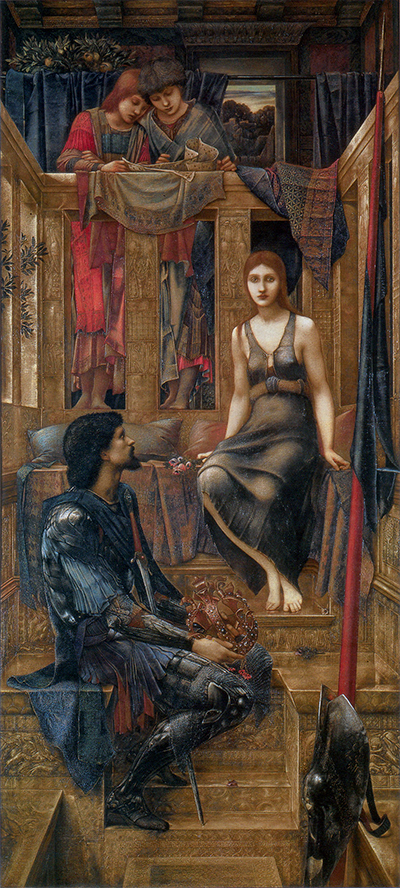Cophetua was an African King who famously loved a beggar by the name of Penelophon. This story comes from an Elizabethan ballad and Tennyson's poem The Beggar Maid and provided Edward Burne-Jones with the inspiration that he needed to create this elaborate painting.
Lord Tennyson was to influence many British artists through his poetry, most famously displayed by John William Waterhouse's The Lady of Shalott. His work was particularly of note to the Pre-Raphaelite artists, a group of which included both Waterhouse and Burne-Jones. Burne-Jones' personal intepretation in oils of this poem was highly respected in mainland Europe and helped to promote other works by the artist there. He may have had his critics, both at home and abroad, but there were also significant numbers of admirers who were particularly attracted to the integrity of the Arts and Crafts movement as well as their socialist leanings.
There are elements to this painting that have been directly influenced by Andrea Mantegna's Madonna della Vittoria. Having spent time in Italy there were inevitably Italian influences within various artworks by Burne-Jones. He was also an admirer of Piero della Francesca too, for example. The Italian Renaissance, of which Mantegna and della Francesca were early members, has played a huge role in European art as a whole. Many artists since the very early stages of its inception have travelled to and around the country in order to understand more about the achievements made during this groundbreaking period.
As with the majority of his most famous paintings, there were several study drawings created during the development of this overall project. Such sketches would be completed in pencil, chalk or light watercolours, often a combination of all three. The complexity of the final painting would generally more preparatory sketches would be needed.




